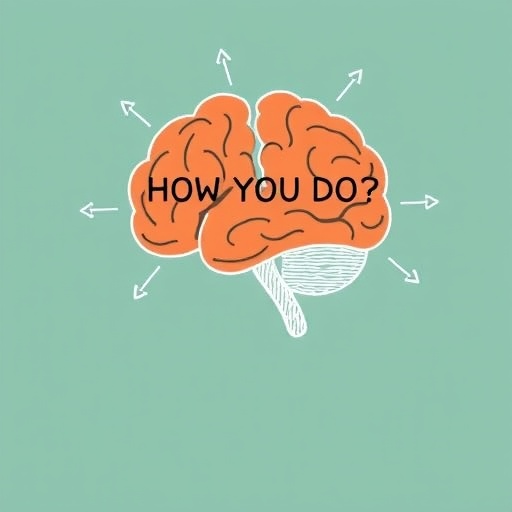Rethinking Motor Control: How the Brain Organizes Action Beyond Body Parts
Conventional neuroscience dogma has long maintained that motor functions in the human brain are organized somatotopically—that is, different brain areas correspond directly to controlling specific body parts such as the hand or foot. This traditional map of motor control, known as the motor homunculus, delineates distinct zones for each limb and region, implying a rigid bodily architecture mirrored in the brain. However, emerging research challenges this paradigm by proposing an alternative framework in which the brain’s motor organization is defined more by the nature and type of action performed than by the specific body part executing it.
A groundbreaking study from researchers at Georgetown University dives deep into this revolutionary idea, exploring whether the brain prioritizes action-type over body-part specificity in motor representation. The research team, led by assistant professor Dr. Ella Striem-Amit, investigates this concept by studying individuals who defy normal bodily constraints: people born without hands who have adapted to use their feet for complex tasks traditionally performed by hands. This unique population provides a natural experiment to test whether brain areas tied to hand movements can adapt to foot-based actions or whether motor cortex organization remains strictly body-part specific.
Central to this investigation is the use of functional Magnetic Resonance Imaging (fMRI), enabling the researchers to visualize brain activity while participants performed everyday tasks involving tool use and object manipulation. Strikingly, their data reveals that brain regions typically dedicated to hand tool use light up even when participants utilize their feet for these actions. This finding directly supports the notion that some brain areas encode the type of action independently of the effector, reflecting a level of neural abstraction previously underappreciated in motor neuroscience.
This action-centered neural organization hints at a brain design optimized not simply to control specific limbs but to represent essential motor patterns and purposes. Such an arrangement would provide critical flexibility during motor development and rehabilitation, allowing the brain to repurpose circuits for different effectors as needed. According to Florencia Martinez Addiego, a leading graduate student and co-author, these results suggest that action-type representation emerges even without typical sensorimotor experience, indicating that the brain’s motor maps are shaped by principles extending beyond direct bodily input.
Yet, this flexible organization is not uniform across the motor system. The primary motor cortex (M1), classically viewed as the brain’s ultimate effector-control area, remains tightly committed to body parts. Even lifelong foot users showed no significant reorganization of M1 for foot-based tool use. Dr. Yuqi Liu, another senior researcher on the project, emphasizes that this reveals differential plasticity across brain regions — some areas accommodate abstract, action-based coding, while others maintain hardwired somatotopic maps.
These findings bear profound implications for neurorehabilitation strategies following brain injuries or limb loss. If the brain harbors action-specific motor maps, therapies might target these more flexible regions to optimize motor recovery regardless of which limb is affected. This can revolutionize prosthetics design as well, potentially guiding device control interfaces toward leveraging abstract action representations rather than focusing solely on mimicking limb-specific motor commands.
Interestingly, the study’s insight aligns with previous observations in sensory areas of the brain. For example, in people who are blind or deaf, cortical regions dedicated to vision or hearing do not remain dormant but are recruited for processing other modalities, reflecting remarkable neuroplasticity. Similarly, the motor system appears to encompass abstracted representations transcending body parts, suggesting a foundational principle of brain organization in both sensory and motor domains.
This research also highlights the importance of early developmental flexibility. As Dr. Striem-Amit notes, many brain regions display heightened malleability in infancy and childhood, where neural circuits are shaped dynamically by interaction with the environment and body. Understanding these critical periods could unlock therapeutic windows for intervention, helping individuals born with limb deficiencies or those who acquire injuries adapt more effectively.
Among the study participants was Alvin Law, aged 65, whose arms were absent due to his mother’s exposure to thalidomide during pregnancy—a tragic iatrogenic circumstance in the mid-20th century. Alvin’s lifelong adaptation to performing manual tasks with his feet offers a compelling human narrative demonstrating the brain’s adaptability. While Alvin finds prosthetics unsuitable given his unique motor abilities developed early in life, he recognizes the value of this research in advancing technologies for others facing limb loss, fostering hope for future improvements in quality of life.
The researchers underscore that the brain’s motor system is more heterogeneous and adaptable than previously believed, consisting of networks that operate at multiple representational levels. Primary motor areas retain somatotopic fidelity crucial for precise motor output, while parietal and premotor regions encode broader action goals and affordances. Together, these collaborative systems enable humans to wield tools and interact with the environment with astonishing dexterity and flexibility, regardless of bodily variation.
Published in Proceedings of the National Academy of Sciences, this innovative study propels a new frontier in understanding motor control by demonstrating that action-type principles extend beyond evolutionarily conserved patterns and typical bodily inputs. It also opens avenues to rethink the brain’s capacity for plasticity, potentially transforming clinical approaches to motor impairment and adaptive technology design for diverse populations.
Ultimately, the research from Georgetown University challenges entrenched views about motor topography and reveals a brain organized not just by body schema but by the abstract nature of interaction with the world. This action-centered brain architecture provides a framework for considering how humans adapt to bodily differences and injuries through neuroplasticity, offering a promising horizon for neuroscience and rehabilitation science alike.
Subject of Research: People
Article Title: Action-type mapping principles extend beyond evolutionarily conserved actions, even in people born without hands
News Publication Date: 19-Aug-2025
References: Proceedings of the National Academy of Sciences, August 19, 2025
Keywords: Brain, Developmental neuroscience




